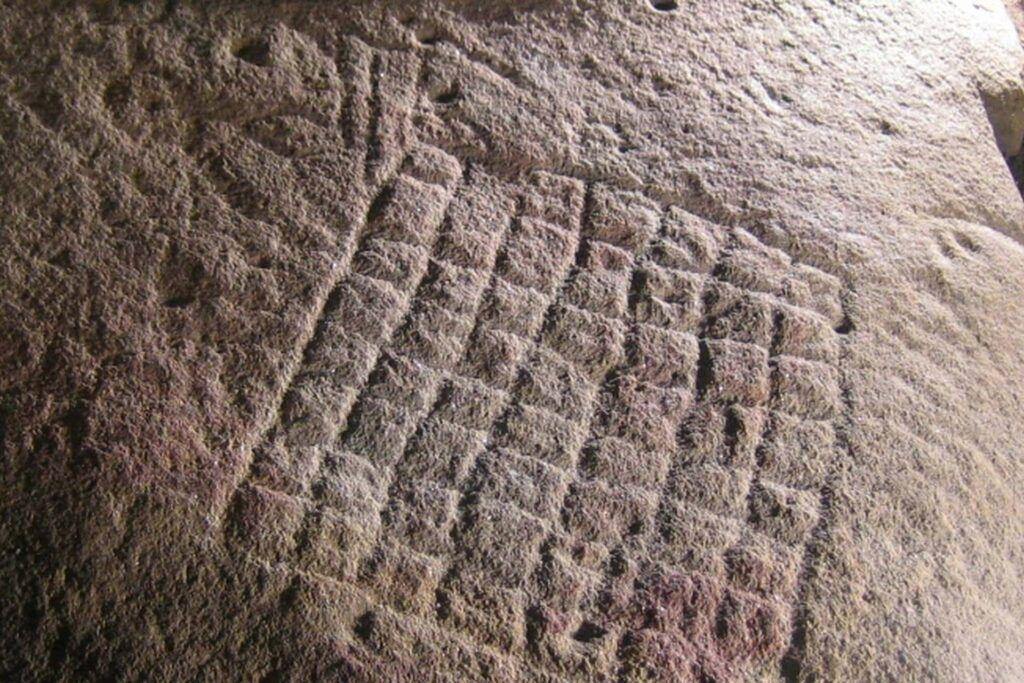Vilar Maior Rock Carvings
In Vilar Maior, in front of the Council Chambers, during the removal of an existing wall, a set of carvings in a granite slate was found, where the great reticulated squared motif stands out, with its 7×8 rows of squares, similar to a board game.
Looking closer to the geometrical and abstract elements that side the great square, namely the halteriforms, escaliforms, V figures (feminin conotation) and the multiple dimples, confirm that it is the first pre historical rock art of the Sabugal Municipality.
The engraving was performed using stone or metal artifacts. The motifs vary in width and depth.
Despite highly schematic, by the use of geometric forms in most cases, these represent naturalistic and antropromorphic figurations, sintheticly associated to thoughts and concepts, unknown to us.
Specialists frame this iconographic repertoire inside the Schematic Art phenom, with several artistic paralels among other portuguese regions (mainly interior north). Unlike paleolithic art, which motifs were mainly animals, the schematic art is a more recent expression, that shows an evolution to more abstract, symbolized, geometrical and antropromorphic figurations. This style started in the Neolithic and spreaded mainly in the Calcolithic period and Bronze Age (3rd and 2nd millenia b.C.).
In Vilar Maior are knowned findings that prove the rich human occupation in the period of the Late Bronze, especially because of the famous bronze sword, with leaf shaped blade (displayed in the Guarda Regional Museum), but also the necklace glass beads, the axes and memory slates in polished stone, the shuttle millstones and the manual and lathe pottery. These carvings allow to suppose that the local settlement goes back a few more centuries and that these communities created a sacred or artistic space in the hill side where the carvings exist, where were left for posterity, carved in rock, mithological representations, or simply artistic, about the conceptions of the surrounding reality – which we are unable to disclose. This drawn rock could be place for rituals or a reference to mithological events, which nature exceeds us. It surely is, another point of archaeological interest in the heart of the Medieval Village and in the Sabugal Municipality.




